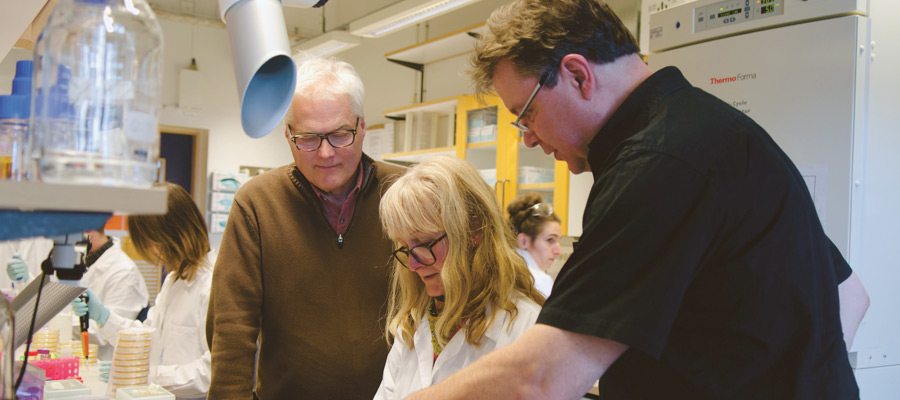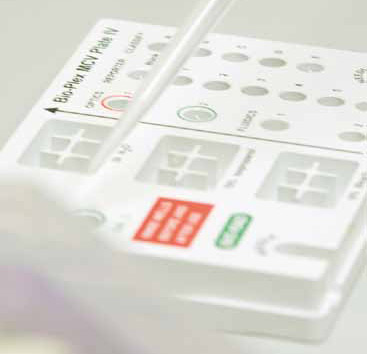
Heiko Herwald, professor at the Division of infectious diseases, University of Lund, find biomarkers for earlier diagnosis, before symptoms are fully developed for sepsis.
NOTE – This article is machine translated from Swedish.
In case of infection turns the body’s immune system to fight the invaders. Usually it is possible and we do recover. Sometimes, however, the pathogens into the bloodstream and then becomes immediately more critically. Then the infection released in sepsis, formerly known as blood poisoning. Both dramatic and serious condition, where every minute is critical to how it should go to the patient. Today, there is no way to make a diagnosis other than using symptoms.
The disease in sepsis is extremely fast and involves the whole body, especially the cardiovascular system and blood clotting. A third of those affected die, and many who survive may live with suites of the disease. Their life expectancy is on average seven years shorter than for the rest of the population. Among other things, effective intravenous antibiotics are put in place immediately can be the difference between life and death. Each extra hour will be before treatment can be put into increasing the mortality rate of eight percent.
– The big problem when sepsis is actually not the bacteria itself. It’s not they or their toxins that damage, it is the body’s own exaggerated inflammatory response, says Heiko Herwald.
In sepsis activated coagulation system and the formation of mikrokoagel which puts the smallest vessels which risks damage different organs. Kidneys which have high perfusion are particularly vulnerable and those with sepsis must often be dialysis. Kidney damage can either go back or become permanent. Finally starts the body’s supply of coagulation factors power and bleeding risk increases instead. In addition, the immune system produces antimicrobial substances in high dose harm more than they do good. In inflammatory process later stage therefore increases vascular wall permeability which leads to large amounts of fluid is redistributed from the bloodstream to tissues and blood pressure decreases.
– Everything in the body is simply wrong. The patient may look like a michelin man of all fluid has leaked out and you have to compensate by giving large amounts of intravenous fluids, says Heiko Herwald.
Point-of-no-return
One can wonder why the body responds in this way. For what it does, so does not help the patient to survive anyway. Heiko Herwald has its own thought on how this reaction developed, related to the species ‘ survival to make rather than the individual. He believes that the body will be taken to a “point-of-no-return” which from the evolutionary perspective is better to make the process short and let the individual go under, than to risk to spread the infection further.
So the reasons of course but not in modern health care and therefore there is a need to find effective treatment. Despite the fact that more people in the world suffer from sepsis than each stroke, cancer and heart attacks, spent only a fraction of the total research budget on research on sepsis. Interest from the pharmaceutical industry is also cool. Resistance development
to antibiotics makes such projects risky and in addition there is more money to be made
on drugs such as hypertension or diabetes, that people need to take the rest of their lives.
Works great on young healthy mice
 At the biomedical center in Lund leads Heiko Herwald one of ten close collaborative research groups with infections as a common denominator. They engaged in basic research with implications for clinical practice and identify the mechanisms of the inflammatory response in case of infection. In these mechanisms, see potential for new diagnostics and improved therapy. To know where in the inflammatory process, a patient is and how the process looks for that particular person has also proved crucial. In a healthy person is the initial pro-inflammatory response greatly but is suppressed since in the anti-inflammatory transient phase so that the patient recovers. In older people and in those with underlying illness and poor immune system, can the initial pro-inflammatory response to be very weak. Suppression of the shut down of adequately and the patient dies.
At the biomedical center in Lund leads Heiko Herwald one of ten close collaborative research groups with infections as a common denominator. They engaged in basic research with implications for clinical practice and identify the mechanisms of the inflammatory response in case of infection. In these mechanisms, see potential for new diagnostics and improved therapy. To know where in the inflammatory process, a patient is and how the process looks for that particular person has also proved crucial. In a healthy person is the initial pro-inflammatory response greatly but is suppressed since in the anti-inflammatory transient phase so that the patient recovers. In older people and in those with underlying illness and poor immune system, can the initial pro-inflammatory response to be very weak. Suppression of the shut down of adequately and the patient dies.
– For a number of years ago made pharmaceutical trials to dampen the pro-inflammatory response. On young healthy mice it worked great, but in patients with diabetes and without infection defense became the disaster. We got a side of tom effect when pressed down the immune response even more. This means that you must monitor each patient and measure the inflammatory response to know what treatment is needed.
“We must have new biomarkers with better precision in order to achieve this. We must also be able to find out whether the patient is at the beginning or end of the inflammatory phase.
Heiko Herwald and his colleagues are studying both mice and humans to identify proteins that circulate in healthy and sick individuals. By comparing the sick and healthy mice, they can also identify markers that can show if any body have already been damaged and, if so, which. One of their discoveries have led to the development of a biomarker, Heparin
Binding Protein, now under development in a diagnostikföretag.
It is a marker showing vascular leakage. It can be detected in the blood six hours before the blood pressure falls and it is the fastest and most sensitive biomarker we know of sepsis. Cursor makes it easier to provide adequate treatment quickly and thus avoid the patient ends up in shock and get kidney damage.
Opens more opportunities for new drugs
When asked which one is next biomarker to come out of the Group’s research, says Heiko Herwald, that they are not really interested in looking at single biomarkers, but on how multiple biomarkers together form the pattern. This is the envelope from Laguardia Foundation of great help. With the newly purchased equipment, 50 proteins detected in one sample, instead of previously measured in each assay, and staining of the biopsies can be done automatically, increasing both speed and complexity in research while the cost is actually lower.
“We want to understand how the pattern looks at inflammation. Humans have 20 000 to 30 000 genes that give rise to almost as many proteins. We want to look at groups of proteins and see how they affect each other. It opens more opportunities for drug development. We have many proteins that are promising candidates. Between 20 and 30 pieces of regulating in a variety of ways the immune response and could possibly be used to prevent the onset of the severe clinical picture in sepsis, which in turn is likely to damage the kidneys and other organs.
